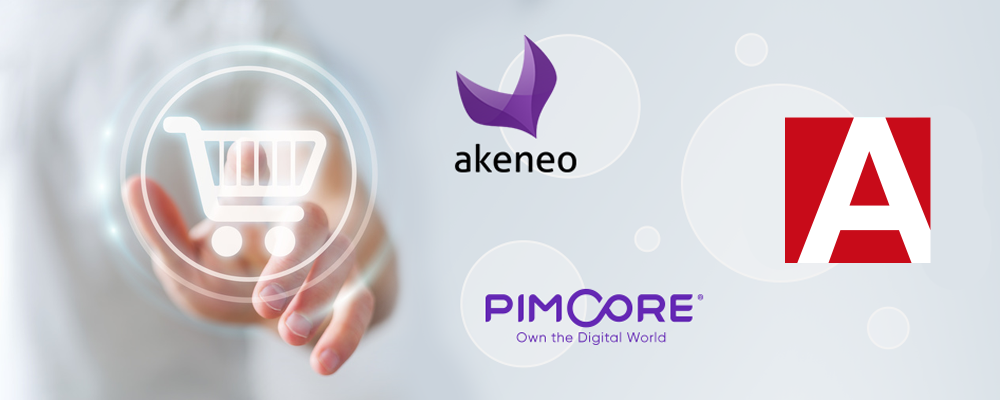
Table of Contents
- AtroPIM - as a modern and flexible open-source PIM system
- Pimcore as a comprehensive open-source PIM, MDM, DAM, CMS and e-commerce solution
- Akeneo - as an open-source e-commerce PIM system
- AtroPIM, Pimcore and Akeneo: open-source PIM comparison
- AtroPIM as an Akeneo alternative
- AtroPIM as Pimcore alternative
- Pimcore vs. Akeneo
- Demo versions
- Conclusion
In order to increase sales and improve the efficiency of marketing measures, companies are more and more often using innovative software, including PIM systems. Today there are already over 100 solutions on the market that deal with PIM functionality. The choice isn’t easy. In this article, I focus on comparing open-source PIM systems, because nowadays they provide a really good alternative to other paid solutions, even for Enterprises.
PIM systems worth mentioning are the following: Pimcore, Akeneo and AtroPIM. These PIM software systems are web-based and can be used with any modern browser. All three systems have REST API and are thus ideally equipped for data exchange with third-party systems such as ERP, WMS, CMS, shop systems or others. All three systems can be extended with free or paid modules.
In this open-source PIM system comparison, I focus particularly on costs, features, usability and support. Although the mentioned open-source PIM software solutions when compared have many similarities, there are also many differences, especially in the features. I hope this article will serve as a good basis for many PIM users to choose a "right" PIM system.
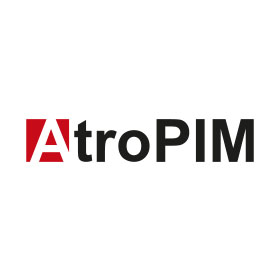
AtroPIM - as a modern and flexible open-source PIM system
AtroPIM is developed since 2017 and is the newest open-source PIM software on the market. AtroPIM exists in single core version of the software, which can be extended with premium and free extensions. It is based on the AtroCore Platform. AtroPIM is based on a modular, service-oriented, 100% API-centric software architecture. This allows to connect the system to third-party systems faster and to develop it further, because no separate API as e.g. for Akeneo must be developed. AtroPIM is free and is distributed uniformly under GPLv3 license.
Thanks to the fact that AtroCore Platform was developed as a common platform solution for business software development, AtroPIM is extremely flexible in terms of data model, expandability and development possibilities. Because all CRM entities and functions have been retained in AtroPIM, you can activate them and use the system as PIM and CRM in one instance at the same time. AtroPIM offers users an innovative Module Manager to manage the purchased and / or individually developed modules more efficiently, because here the dependencies between modules and their versions are considered. It allows to reduce the number of conflicts and to update the system faster and more efficiently.
Thanks to the high flexibility, AtroPIM can be used equally well by production companies and brands as well as wholesalers and online retailers. The necessary changes do not always have to be programmed, because entities (including all fields), their relations and layouts can be completely configured by an administrator. The customizations that cannot be configured can still be programmed additionally.
Data model
AtroPIM has a fully configurable entity-based data model. You can create new entities and adjust existing ones. Configuration can be done by Administrator any time, even after the system was already implemented and is used productively. Basically, management of any data is possible, not only product related. All kinds of relations are possible between the entities - one-to-many, many-to-one and many-to-many. There are appx. 20 data types for product fields and attributes, some intelligent validation is also possible, e.g. min and max values for integer or float data types. A separate data type for fields and attributes can be used to store any type of digital asset.
Data hierarchy is configurable, but in this case no inheritance would apply. Out of the box products inherit attributes from product families. You may need to use the premium module "product variants" if you want, that variants inherit attribute values from parent products. It is also possible to switch the inheritance off for a certain value and set an individual value.
User Interfaces
AtroPIM is the only completely mobile-friendly system with a responsive UI design. There are 3 themes out of the box – classic, dark and light. All layouts consist of panels, no tabs are used. Admin can configure individual multiple dashboards and navigation for each user as well as for each portal. All UI layouts are completely configurable by Administrator via drag & drop.
Data integration, import and export
Different import or export feeds can be configured for any entity in the system to exchange the data for any entity in the system together with the data for the related entities (e.g. product with their associations, assets, catalogs etc). To enable untypical imports or exports additional feed types can be easily programmed. There is a REST API, which is available for everything in the system thanks to API-centric architecture (frontend always uses API to communicate with the backend), even for custom modules and configurations.
Digital Asset Management (DAM)
You can use own DAM (AtroDAM) system together with AtroPIM or any other third-party DAM you like. AtroPIM and AtroDAM can be integrated seamlessly and are fully integrated. AtroDAM is highly configurable, like a core system AtroCore. You can create and use as many asset types, as you wish. It is also possible to apply different validation rules. Any uploaded file is stored automatically in DAM. It is possible to manage any kind of metadata and to utilize workflows if workflows module is installed.
Access control and permissions
In AtroPIM have a very flexible access management. The adopter may create different roles, teams and users. You can configure permissions (for creating, editing, reading and removing) for each entity separately, even for custom entities and each field individually. Different access levels can be implemented – for all data records, for the data records of own team and for own data records (where the user is the owner or assigned user), so it is possible that different teams get different access and permissions for different products or other entities.
Workflows
You will need to buy workflows module to be able to use workflows. These are very flexible, but should always be implemented by programmers, not by operators, so you would not be able to make some changes without support. Nevertheless, any workflow can be implemented very quickly, at low cost. UI configuration is currently very limited.
Collaboration
In AtroPIM you get a lot of features for collaboration. You may have an owner and assigned user for any data record in the system, use teams. In the activity panel, which is available for every entity, you can post comments, lead discussions, mention other users (in this case they get notifications), subscribe to data records. Task module would enable you to implement the proper task management to get the work done more quickly.
You can also use portals to organize your collaboration with suppliers, customers, partners and other collaborators. Portals enable your collaborators to use your PIM-system like a PIM sub-system with limited functionality. Different portal roles can be configured for different portals.
Product Experience Management (PXM)
AtroPIM comes with a lot of features for omnichannel and PXM. You can work with multiple catalogs and channels as well as create and spread channel-specific product data. Product data syndication can be implemented via channable (>2500 channels are possible).
Unique selling points of AtroPIM
- Mobile Friendliness (Responsive UI Design)
- Single Edition for everyone
- Configurable Portals for cooperation with suppliers, customers and partners
- High flexibility of the data model, highly configurable
- Fully-fledged platform for business software
- API-centric software architecture

Pimcore as a comprehensive open-source PIM, MDM, DAM, CMS and e-commerce solution
Pimcore was created in 2010. Today, this solution is the oldest and most widely used of all open-source PIM systems. Pimcore is currently (as of 2018) at more than 80,000 companies in use and offers much more than just a PIM system, because with the user gets a lot at the same time: PIM / MDM (Product Information Management and Master Data Management), CMS (Web Content Management), DAM (Digital Asset Management) and eCommerce features directly out of the box.
Pimcore comes in a single edition, which is extensible with additional premiums and free modules. The functional areas can be activated or deactivated separately. Pimcore is free and available under the open-source GPLv3 license and the proprietary PEL (Pimcore Enterprise License) license. The latter allows to use the Professional Services of Pimcore.
Pimcore, like AtroPIM, is based on a modular, service-oriented software architecture - all functionalities are implemented via native PHP API und REST API. As a content, data management and multichannel publishing suite, Pimcore allows to manage any type of content - from documents and images to the most complex product information.
Pimcore's target group are larger companies looking for a customized PIM solution. Pimcore is always fully adapted to the business processes and individual needs of the company. Therefore, the implementation costs required are greater compared to AtroPIM or Akeneo. The advantage of this greater initial costs is higher flexibility of the implemented solutions. The Pimcore UIs are based on the Sencha Ext JS Framework, which is considered as one of the most complicated Javascript frameworks. Therefore, the programming that differs from the "default settings" of Ext JS can be quite costly and expensive.
Data model
Pimcore's data model is fully configurable and is based on objects. You can create new objects or edit existing ones. Deep system knowledge is needed to do any configurations. Because Pimcore is first of all a MDM (Master Data Management) System management of any data is possible. There are more than 30 data types, all kinds of relations are possible.
Pimcore offers data hierarchies out of the box and you can apply most advanced inheritance scenarios. Product variants inherit attributes and their values from the parent product. The inheritance can be switched off and an individual value may be set.
User Interfaces
Pimcore has mobile-friendly user interfaces only for frontend portals, websites and online stores, and only if individually developed. The user interface is tab-based and looks pretty complicated for an unexperienced user. User-specific dashboards can be configured. By programming/configuring new layouts can be created. Deep system knowledge is needed.
Date integration, import and export
Simple import and export of the data for a single data object is possible, in this case no related data can be exported. More advanced import and export scenarios are possible only with additional programming. Pimcore offers REST API and GraphQL for data exchange and enables a lot of possible configurations and creating own entry points.
Digital Asset Management (DAM)
Pimcore offers the most advanced DAM functionality out of the box. Assets can be configured as all other objects in the system to store any kind of metadata. You can edit images directly in the system and convert images and videos on-the-fly. Workflows are also possible. You can also have previews for a wide range of image, video and document formats.
Access control and permissions
Pimcore has users and roles to manage access and permissions. Roles can get different access and permissions for different objects. Users may have multiple roles. Access levels are not available here, but you can use workarounds to get this functionality.
Workflows
Pimcore and AtroPIM use the same symfony component to enable workflows, so the technical possibilities are the same. In Pimcore workflows are very flexible and implementable at low cost, by programmers. There is no UI configuration.
Collaboration
Pimcore offer no panel for posting comments or mention others. There are no owner, assigned user or team. There is also no portal functionality. Workarounds are possible via custom configurations.
Product Experience Management (PXM)
Pimcore is not created for PXM out of the box, but thanks to high configurability can be easily used for it. Product information syndication is powered by Productsup (>2000 channels are possible). Additional programming and configuration will be needed.
Unique selling points of of Pimcore
- All-in-one solution
- Broad range of functions - PIM / MDM, DAM, CMS, E-Commerce
- Service-oriented software architecture
- Fully fledged platform for business software
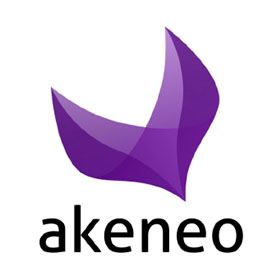
Akeneo - as an open-source e-commerce PIM system
Akeneo came on the market as a French start-up in 2013. Today Akeneo offers three PIM software editions: Community Edition, Enterprise Edition and Growth Edition. The Community Edition is open-source, free and intended as a solution for PIM beginners. The Enterprise Edition offers more features out of the box and is rather aimed at the larger retail or manufacturing companies looking to increase the work effectiveness of their own marketing and product departments. Only the Community Edition you can use on premise. Growth and Enterprise Editions are SaaS solutions. You cannot extend the Community Editions with the modules, which are dedicated for the Enterprise Edition.
Akeneo is very active in the marketing and over the last five years has managed that almost every online retailer heard at least once this name before. The first version of Akeneo was still built on OroPlatform, because of too many performance problems the concepts were changed and in the currently valid second major version nothing is left of it.
The new version shines with new user interfaces (UI) and provides good performance, without the need to carry out any tuning measures (as before). The main focus of the second version was placed on Akeneo usability and simplicity of user interfaces, which unfortunately partially led to the limitation of functional expandability.
The users of Akeneo CE quickly reach the functional limits and are forced to buy the Enterprise version and / or find a PIM agency that can implement the additional technical requirements, which in the end can also be quite expensive.
Data model
The data model of Akeneo is not configurable and can be used only for management of product information. You can still extend the data model by programming and implement your own extensions to manage additional data. In Akeneo no hierarchies are available for products out of the box. Product inherits attributes from its family. Product variants inherit attribute values from their parents. No other inheritance is possible. Inheritance of certain attributes cannot be switched off.
User Intefaces
Akeneo has a really fast UI, like both other systems. But is not mobile-friendly. It offers a good polished simplified UI. So it is easy for everyone to learn how to use the system, many unexperienced user will love it. There are several preconfigured dashboards for different user functions.
Data integration, import and export
Akeneo offers a lot of predefined “Jobs” for data import and export. You should program own module to be able to use additional import and export jobs. No advanced import/export configuration like in AtroPIM is possible. Akeneo hast a REST API, which is implemented as additional functionality. API for custom modules and other customizations is not automatically available. This should be implemented via additional programming.
Digital Asset Management (DAM)
DAM is not available in the Community Edition (CE), but you can get this functionality by extending your PIM system with some module, e.g. to connect it with a Third-party DAM system. The DAM System in the Enterprise Edition is not fully featured.
Access control and permissions
Akeneo also have users and roles to manage access control. Here in the CE you can create different roles and assign predefined permissions for certain entities. Multiple roles can be assigned to a user. Like in Pimcore there are no access levels. Permissions at field level are also not possible, it would not be possible to apply different access and permission rules for different user groups, working with products.
Workflows
Workflows are possible only in the EE. These are pretty simple and cover only the approval process. You will need to create own modules to implement additional workflows.
Collaboration
There is no owner, assigned user or teams, which could be used to enable collaboration. In opposite to Pimcore posting comments and viewing the history of changes is possible here. Akeneo has no portal functionality out of the box but offers Onboarder and Shared Catalogs are separate products, which are compatible with EE to enable the onboarding of suppliers and customers.
Product Experience Management (PXM)
Akeneo enables you to do a lot for PXM. You can manage different channels and have channel specific or localized information. Akeneo offers own solution for syndication of product data to such channels like Amazon, Google Shopping, Alibaba and eBay.
Unique selling points of Akeneo
- Focus is on online retailing and e-commerce
- Very simple and intuitive user interfaces
- Higher level of awareness
- Large community and many modules
AtroPIM, Pimcore and Akeneo: open-source PIM comparison
In this table you will find an overview of the most important functions and features of AtroPIM, Pimcore and Akeneo.
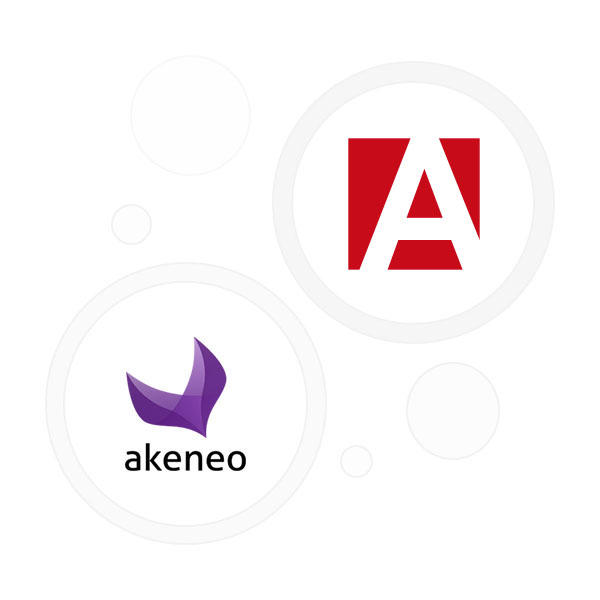
AtroPIM as an Akeneo alternative
AtroPIM vs. Akeneo – Costs
One of the most important parameters in system selection is the cost. Even if the open-source systems are license-free, there will be costs for implementing the system and subsequent support and maintenance. Because that AtroPIM is a generally more flexible solution with many configuration options, the implementation costs will be lower than Akeneo's, also the time to market will be shorter. Running costs are similar in both systems and will depend more on usage intensity, but for Akeneo you should rely on an agency independent of Akeneo (if you want to use Akeneo CE), by AtroPIM you get support directly from the product developer. Total Cost of Ownership (TCO) by AtroPIM is generally lower than by Akeneo, which is a clear advantage of AtroPIM.
AtroPIM vs. Akeneo – Features
The features of the Akeneo Community Edition are those of AtroPIM in many ways. The additional features of the Akeneo Enterprise Edition are available in AtroPIM either directly from the box or they can be retrofitted with additional AtroPIM modules. For both systems it is possible to extend the functions using additional modules, but today Akeneo offers more modules than AtroPIM.
Compared to Akeneo, AtroPIM offers, among others, the following functional advantages:
- Configurable dashlets and dashboards
- Flexible data model thanks to configurable entities and relations
- Configurable layouts and better filtering options
- Portals: retailer portal, supplier portal and other portals
- Better organized cooperation possible
- More advanced authorization concept
- More features related to product management
- AtroPIM can be quickly expanded with CRM and ERP functions.
AtroPIM vs. Akeneo – Usability
Both systems have set themselves the task of providing the end user with excellent usability - but this task was understood and implemented differently. By Akeneo, the user interfaces have been highly simplified, by AtroPIM it was attempted to create a universal and easily extensible UI with optimal space distribution.
The UIs of AtroPIM are more complicated than of Akeneo, but you can quickly adapt to them and benefit from the many additional options. Unlike Akeneo, AtroPIM offers responsive design and works equally well on tablets and smartphones. With AtroPIM, absolutely all possible additional functions can be implemented on existing interfaces without having to search for space for new functions or buttons for a long time.
AtroPIM vs. Akeneo – Support
Although Akeneo currently scores with a larger Community, Akeneo itself offers support only for Enterprise Edition (EE) and Growth Edition customers. EE is pretty expensive. The users of the Akeneo Community Edition are referred to external service providers who do not always have enough competence for the system. The users of Akeneo EE should expect yearly costs of about 50.000 EUR.
Support and maintenance for AtroPIM is generally cheaper, the cheapest support package costs only 190 euros per month, other support packages cost 290 and 390 euros per month.
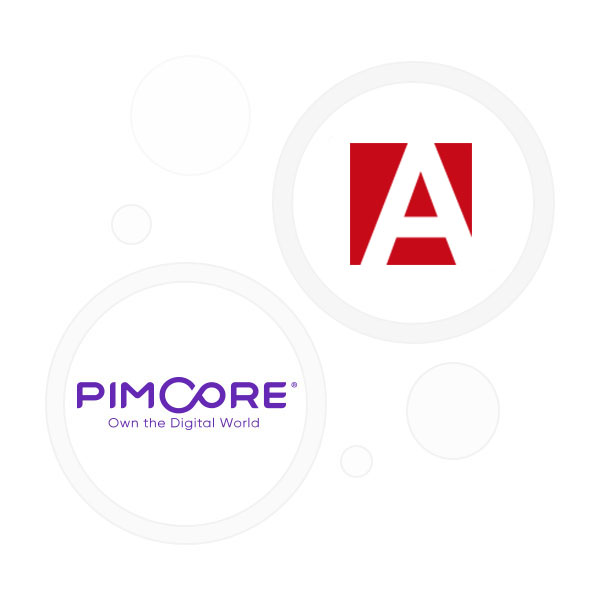
AtroPIM as Pimcore alternative
As the most complicated open-source PIM system, Pimcore will also claim the highest implementation costs. Also, the implementation of new features can be more expensive with Pimcore than with AtroPIM because of Ext JS Framework.
AtroPIM vs. Pimcore – Costs
Pimcore is more geared towards larger users and more suitable for users who want to solve the tasks in the areas of PIM, MDM, CMS, DAM and e-commerce at the same time. If you want to add features in AtroPIM from the areas of CMS and online store, it will cost more than by Pimcore, because Pimcore has already these features.
AtroPIM vs. Pimcore – Features
Pimcore is primarily an all-in-one solution. If you need an all-in-one solution for PIM, MDM, CMS, DAM and e-commerce, Pimcore will be a better alternative than AtroPIM. Whether an all-in-one solution is a really good solution, you should decide for yourself. A distributed system architecture, while using a separate system for each functional area, may have its own advantages, because an all-in-one solution will never be as good in one area as standard software developed specifically for the area. So Magento, Shopware or OXID will be a generally better shop system than an e-commerce module of Pimcore.
When comparing AtroPIM with Pimcore, each system has its own strengths:
- Configuration of layouts, entities and relations is much easier in AtroPIM.
- Both systems offer the possibility to create portals – by Pimcore the portals can be implemented as fully fledged B2B websites, by AtroPIM the same user interfaces are used for portals as for the main application.
- AtroPIM has a full-fledged CRM module, which offers as CRM much more possibilities as by Pimcore.
- Pimcore offers much more functions in the DAM area.
- Pimcore also offers the modules for e-commerce and CMS, AtroPIM has nothing to offer in these areas yet.
- Both systems shine above all as software ecosystems with corresponding advantages for further development and individualization.
AtroPIM vs. Pimcore – Usability
Unfortunately, Pimcore's user interfaces cannot be described as intuitively understandable at all, this is the clear consequence of system complexity and the use of Ext JS Framework, because no system can be both complex and intuitively understandable.
Pimcore still complies with the UI standards from the early 2010s, and at that time the solution was really modern and innovative.
Unlike AtroPIM, Pimcore also does not offer responsive design, structure of the interface will never allow it, currently Pimcore is understood and developed further as a clear desktop app. It’s necessary to attend some training before using Pimcore. The use of the system may be very stressful for the users, who should use it only from time to time.
The user interfaces of AtroPIM are more modern and understandable. The space distribution and the information overview are really good.
AtroPIM vs. Pimcore – Support
Both systems offer paid support. Paid support by Pimcore includes the use of a commercial license. The code of the Pimcore system remains 100% free, just like by AtroPIM. Both providers offer SLA Agreements. Pimcore offers SLA support contracts starting from 7.200 EUR/yearly (yearly contract). AtroPIM offers SLA support packages for 190, 290 and 390 EUR monthly. Other maintenance contracts can also be negotiated by both systems.
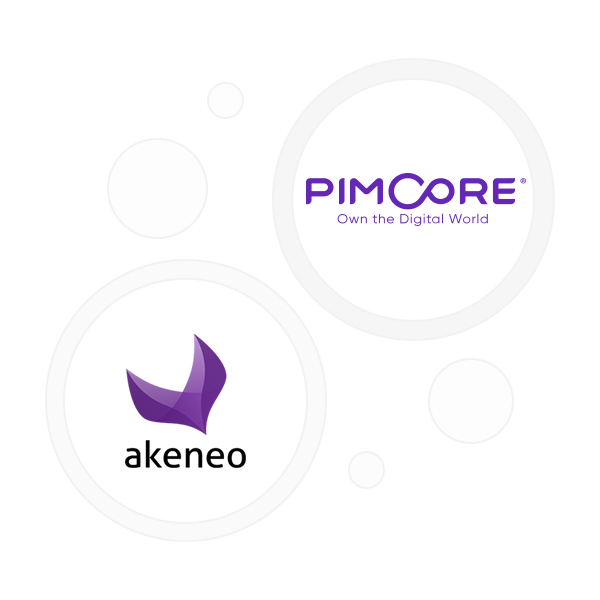
Pimcore vs. Akeneo
The comparison of Pimcore with Akeneo is basically similar in many ways to the comparison between Pimcore and AtroPIM.
Costs
The implementation costs for both systems can be highly dependent on the needs of the user. In this relation, the functional comparison may make more sense, because both systems solve different tasks and in different ways. The running costs for the Akeneo Enterprise Edition, which also offers more features than the Community Edition, will be higher overall than by Pimcore.
Features
Because Pimcore is a unified solution for PIM, MDM, CMS, DAM and e-commerce in one instance, Akeneo cannot compete here. For a larger user, the Akeneo Enterprise Edition may be better, because only in this edition, there are e such enterprise features as workflows, approvals, and versioning that are directly available by Pimcore.
Usability
The users of Akeneo are definitely not overloaded with too many features and buttons like in Pimcore. For some application cases the user interfaces of Akeneo will seem too simple - that's what every potential PIM user should decide for themselves.
Support
Akeneo offers SLA support only for the Growth and Enterprise Edition an, , the price for EE incl support would be appx. 50.000 EUR/year. Pimcore, in contrast, offers professional service for all users. Support costs for Pimcore will be overall higher than for Akeneo CE due to the complexity of the system, but can be lower than for Akeneo EE.
Demo versions
If you want to get your own feeling about each system, use the public demo versions, which are available for all of them.
| AtroPIM | Akeneo | Pimcore |
|---|---|---|
Demo versions with premium modules and without them are available. |
http://demo.akeneo.com Login: admin Password: admin |
https://pimcore.com/en/try Demos for PIM, DAM, CMS and Digital Commerce are available. |
Conclusion
As cost- and license-free solutions AtroPIM, Pimcore and Akeneo offer a lot to the user. Of course, every system has its own advantages and disadvantages, and every potential user should decide which solution suits him better. A professional advice is here highly recommended.
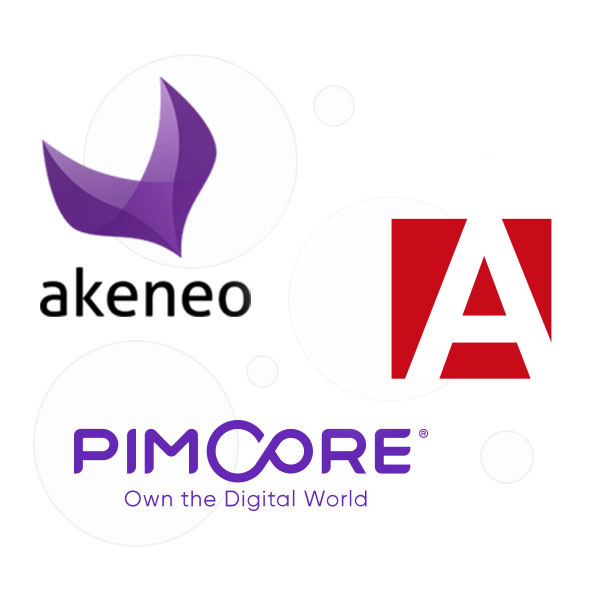
First and foremost, Pimcore scores as an all-in-one solution, and is the best suited for those users who want to organize PIM, MDM, DAM, CMS and e-commerce processes through a single system. Pimcore is the most flexible and complicated system in our comparison, so it offers a lot of functions in many business areas.
But if to focus only on the classic tasks of PIM system, AtroPIM or Akeneo may be better alternative. Akeneo is the simplest and easiest to use. Akeneo is, however, not a good option, if you have a complicated product structure or if you want to manage more than just product information. AtroPIM offers high flexibility and configurability and is relatively simple in use. In contrast to Akeneo, AtroPIM, like Pimcore, was created as a platform to develop various business software and is better suited for functional extensions. AtroPIM is much more flexible than Akeneo and definitely offers more features and capabilities than the Akeneo CE, also in comparison to the Akeneo Enterprise Edition AtroPIM has more to offer more in some places, but it requires purchased modules.
In a TCO (Total Cost of Ownership) comparison AtroPIM will be a clear winner in many cases. Pimcore is a better choice if you love all-in-solutions and have many problems in different areas to solve. If your employees find the AtroPIM or Pimcore UIs too complicated, then Akeneo is the right solution for you.
As the newest solution, AtroPIM offers features that none of the PIM systems offer in either paid or free versions and can even keep up well with many paid solutions. As a new free alternative to Akeneo or Pimcore, AtroPIM provides production and trading companies with innovative PIM software on a high level.

